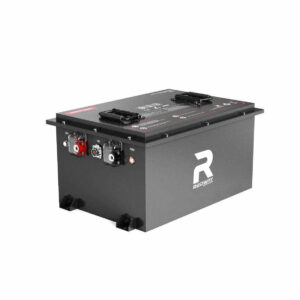How Does a DC to AC Inverter Power Your RV Adventures?
A DC to AC inverter for RVs converts battery-stored DC power into household AC electricity, enabling appliances like microwaves and laptops to function off-grid. Critical for modern RVing, it balances power needs with battery capacity, ensuring seamless adventures. Key factors include wattage requirements, inverter type (modified vs. pure sine wave), and integration with solar systems.
How Do DC to AC Inverters Work in an RV?
RV inverters transform 12V/24V DC power from batteries into 120V AC power through electronic switching circuits. Modified sine wave inverters simulate AC current in stepped waves, suitable for basic devices. Pure sine wave inverters replicate grid-quality electricity, essential for sensitive electronics like medical equipment. The conversion process involves voltage boosting and waveform modulation to match appliance requirements.

Modern RV inverters use advanced MOSFET transistors and high-frequency transformers to minimize energy loss during conversion. The process begins with a DC input from the battery bank, which is then converted to a high-frequency AC signal. This signal is stepped up to 120V using a transformer and filtered to produce a stable output. Modified sine wave inverters are cost-effective for resistive loads like incandescent lights or heaters, while pure sine wave models are mandatory for inductive loads (e.g., motors in refrigerators) and devices with microprocessors. For example, a CPAP machine may malfunction with modified sine wave power due to harmonic distortion, whereas laptops and LED TVs operate safely with either type.
| Inverter Type | Compatible Devices | Efficiency |
|---|---|---|
| Modified Sine Wave | Lights, Tools, Heaters | 85-90% |
| Pure Sine Wave | Medical Devices, Electronics | 90-95% |
What Are the Key Features to Look for in an RV Inverter?
- Continuous/Peak Wattage: Match to your highest-power appliance (e.g., 1,500W for coffee makers)
- Waveform Type: Pure sine wave for electronics vs. modified for lights/tools
- Efficiency Rating: 85%-95% efficiency reduces energy waste
- Built-in Protections: Overload, short-circuit, and temperature shutdowns
- Parallel Capability: For future capacity expansion
How Does Solar Integration Enhance RV Inverter Systems?
Solar panels (300W-1,000W) coupled with MPPT charge controllers replenish batteries during daylight, extending inverter runtime. Smart hybrid inverters (e.g., Victron MultiPlus) prioritize solar input, switch to grid/generator when needed, and enable “silent camping” without generators. Requires compatible battery chemistry and proper array sizing.
Integrating solar with an RV inverter creates a self-sustaining power ecosystem. During peak sunlight, solar panels can fully recharge a 200Ah lithium battery in 4-6 hours while simultaneously powering AC loads. Advanced systems use bidirectional inverters that can sell excess solar energy back to shore power grids in some configurations. For winter camping, tilt-mounted panels with snow guards maintain 60-70% efficiency even in suboptimal conditions. Pairing a 3,000W inverter with 800W of solar capacity allows continuous operation of a 1,200W air conditioner during daylight hours, reducing reliance on generators.
| Solar Array Size | Battery Recharge Time (200Ah) | Continuous AC Load Support |
|---|---|---|
| 400W | 6-8 hours | Up to 300W |
| 800W | 3-4 hours | Up to 600W |
“Today’s RV inverters aren’t just converters—they’re energy management hubs. Look for models with programmable relay outputs to automate generator startups at 50% battery depth of discharge. The real innovation? Inverters with AI-driven load prediction that adjust output based on your travel patterns.”
– Industry Expert, RV Power Systems Magazine
FAQs
- Q: Can I run an air conditioner on a 2,000W inverter?
- A: Only soft-start 13,500 BTU units (1,700W surge) with lithium batteries. Hard-start models require 3,000W+.
- Q: Do inverters work while driving?
- A: Yes, if wired directly to the chassis battery, but avoid draining it below 12.4V.
- Q: How often should inverters be replaced?
- A: Quality units last 10-15 years; replace when efficiency drops below 80%.
